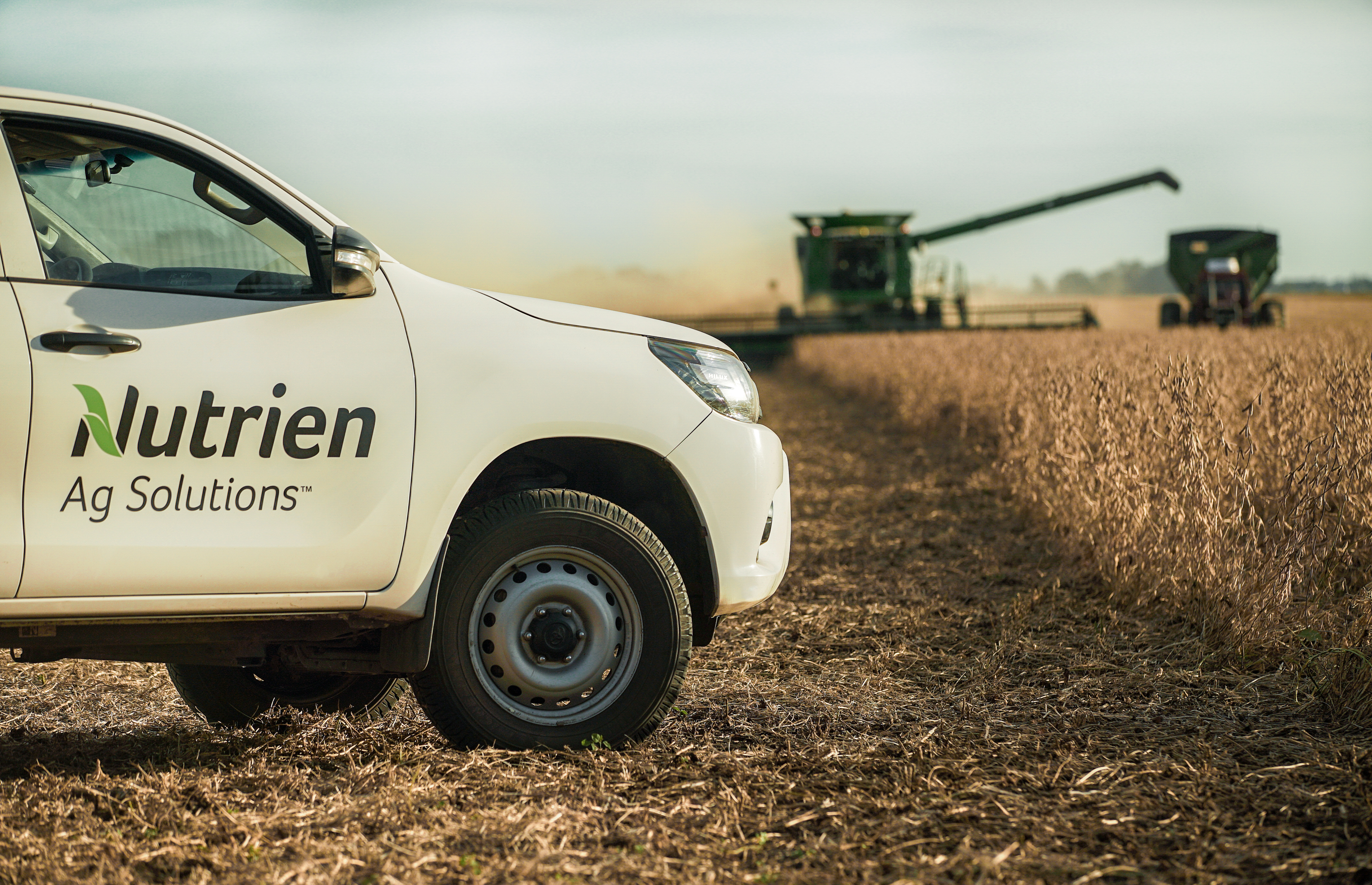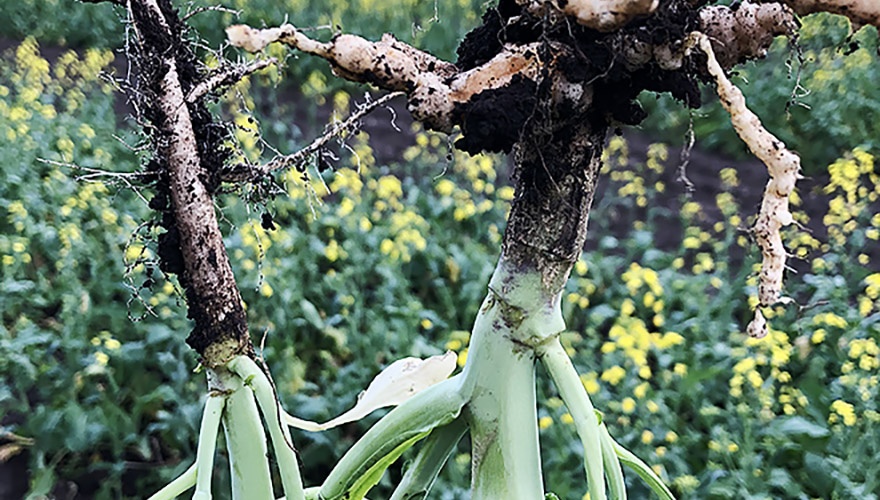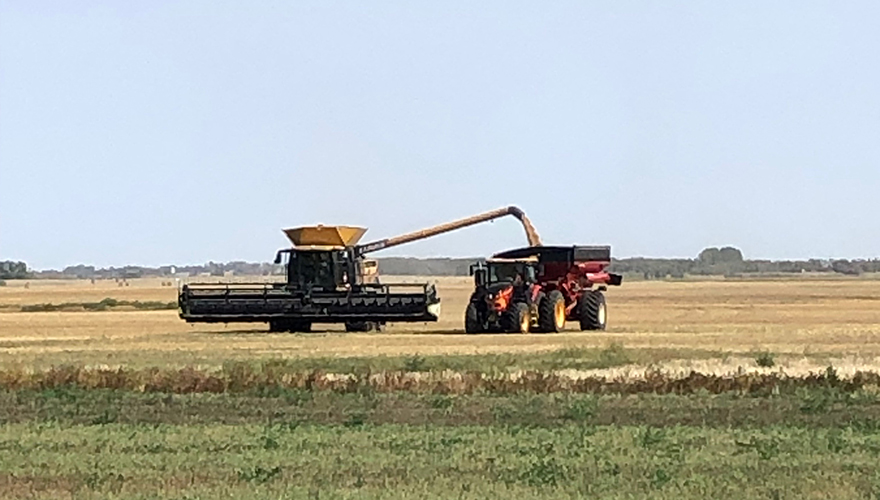Posted June 09, 2017
WHAT YOU NEED TO KNOW
Brought to you by Nutrien Ag Solutions and Bayer CropScience
Recent field research is driving a new understanding of the best approaches for growers to protect their cereal crops and get the greatest benefits from fungicide applications. Here’s an overview of the latest knowledge and how growers can take advantage.
Five keys to success
1. SPRAY AT HEAD TIMING RATHER THAN FLAG LEAF STAGE
New data from demonstration trials across the Prairies shows there’s often a better approach than applying at the flag leaf stage. The best game plan may be to apply at head timing. In over eight years of independent and Bayer-led trials from 2008 to 2015, the evidence shows growers will get better disease control, better yield protection and an increase in quality by following this approach.
For example, data from the 8 years of Bayer Demonstration Strip Trials (DSTs) showed that fungicide applied at head timing provided a better grade 22% to 24% of the time, compared to untreated, while flag leaf applications only improved the grade 6% to 12% of the time.
2. SCOUT FREQUENTLY AND DIFFERENTIATE THE TYPES OF DISEASE PRESSURE
Growers still need to keep on top of leaf disease. The latest knowledge shows quick response pays the greatest dividends, putting the onus on frequent scouting to reap the most reward. A good rule of thumb for growers, say Nutrien Ag Solutions crop advisors, is to scout often and to protect the crop from leaf diseases that show up on the upper leaves or flag leaf. When this happens, fungicide applications will protect yield and prevent disease from getting out of control.
However, a more delayed approach is needed if the disease pressure identified is moderate at flag leaf timing and is restricted to lower leaves. In this situation, the evidence shows growers are better off to wait another seven to ten days to apply a fungicide at head timing, resulting in higher yield and quality benefits for the crop.
3. PROTECT CROP QUALITY AT A BROADER LEVEL
Research results also reinforce the importance of considering more than just direct disease presence as a quality downgrade factor. Disease can also impact color, plumpness and test weight — all of which can decrease the value of the crop.
For example, multiple-year trials (2008 to 2015 Bayer grower-cooperated replicated cereal DSTs) have shown that crops treated with Prosaro® experience an average of a 1 pound per bushel increase 29% of the time and a 2 pound per bushel increase 11% of the time. Similarly, results from these same trials have shown that wheat treated with Folicur® EW at head timing has an average 1 pound per bushel increase 21% of the time, and a 2 pound per bushel increase 7% of the time.
4. CONSIDER A FUNGICIDE, REGARDLESS OF MOISTURE CONDITIONS
In dry years, in wet years, in heavy disease locations to minimal disease-risk areas, fungicides continue to prove their worth. Some growers believe that fungicides will not provide a good return in lower moisture seasons, but research shows that it can pay to spray, even in dry years.† The numbers speak for themselves. With over eight years of trial results across the Prairie provinces, Prosaro fungicide has provided a +3.9 bu/ac* advantage over the untreated check in a dry season, while Folicur EW has averaged a +3 bu/ac* increase in a dry season.
†Dry year is defined as <85% of average growing season precipitation. *Source: 2008-2015 grower-cooperated replicated Cereal DSTs, 17 trials.
5. USE BEST PRACTICE CHECKLIST FOR OPTIMAL RESULTS
To get the most out of a fungicide application at head timing, growers are advised to follow this approach:
- Increase seeding rate for a consistent crop stage
- Use a forward/backward nozzle formation to fully cover both sides of the head
- Consult the equipment manufacturer’s nozzle charts to identify the best speed for maximum crop coverage
- Target a medium to coarse droplet for optimal coverage at the head
- Set the sprayer boom 12 to 15 inches above the crop canopy for better coverage and to reduce drift
THE BOTTOM LINE? IT PAYS TO SPRAY
Growers can have peace of mind knowing that applying a foliar fungicide at head timing protects the flag leaf, the penultimate leaf and the head throughout the grain-fill period. If disease pressure is moderate leading up to the flag, growers can simply target the head and still expect strong and reliable quality and yield protection.
SIMILAR RESULTS IN PULSE CROPS
In addition to cereals, Bayer has recently added numerous pulse crop and soybean trials across the Prairies, including trials with lentils, field peas and soybeans. Early results from these trials indicate that a properly timed fungicide application can result in a significant yield gain.
For more advice on disease management, visit cropscience.bayer.ca or consult with your local Nutrien Ag Solutions representative.
Always read and follow label directions.
Folicur® and Prosaro® are registered trademarks of Bayer Global.
Bayer CropScience Inc. is a member of CropLife Canada.
FEATURED LINKS
NEWSLETTER
Want to stay caught up in all things agriculture? Sign up for the newsletter and get all the latest news straight to your inbox.
Putting Precision Farming Data Work Field
Posted June 22, 2017





